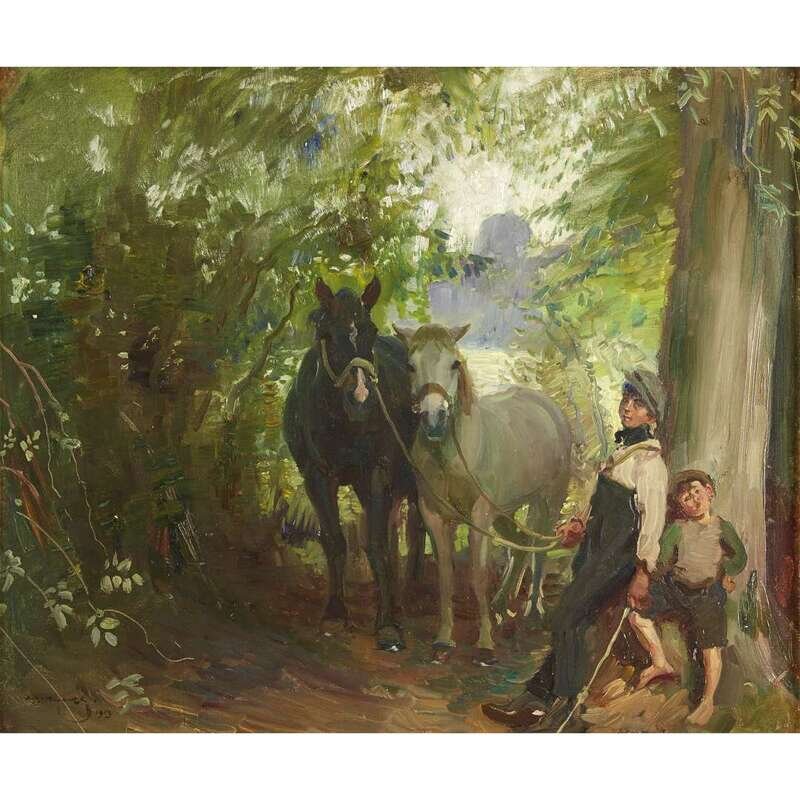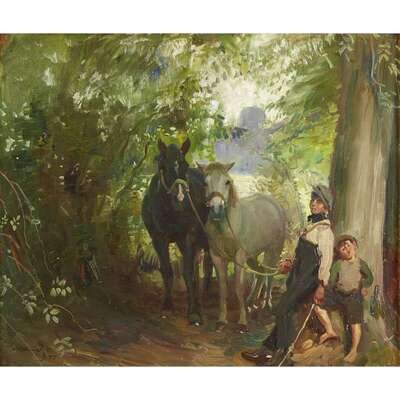Condition Report
Contact Information
Lot 40
SIR ALFRED MUNNINGS (BRITISH 1878–1959) "TWO OF THEM"
Sale 5353 - European Art & Old Masters: 500 Years
Feb 27, 2019
7:00AM ET
Live / Philadelphia
Own a similar item?
Estimate
$200,000 -
300,000
Price Realized
$175,000
Sold prices are inclusive of Buyer’s Premium
Lot Description
SIR ALFRED MUNNINGS (BRITISH 1878–1959) "TWO OF THEM"

